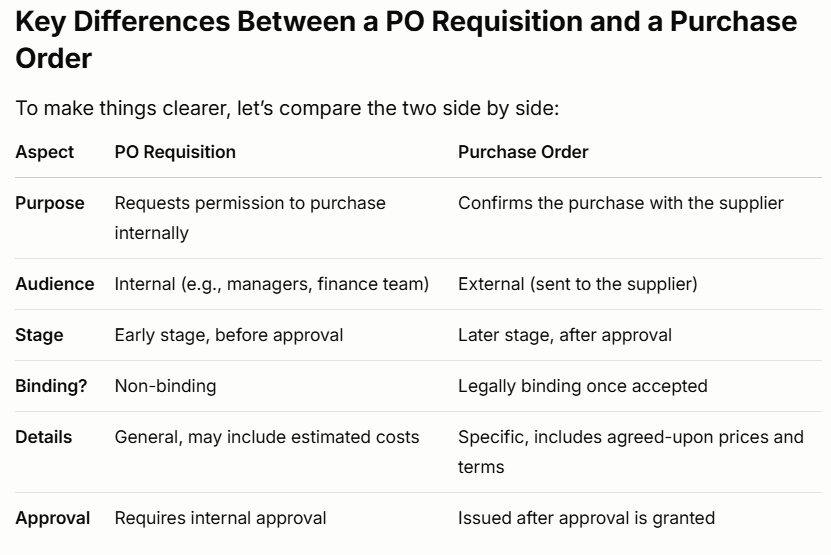
Procurement can seem like a world full of jargon — and two terms that often cause confusion are purchase requisition (PR) and purchase order (PO). Although they sound similar and are closely linked in the purchasing process, they serve very different purposes and occur at different stages. Whether you’re a business owner, a procurement professional, or just curious about how organizations manage their purchasing, this blog post will break down the differences between a PO requisition and a purchase order, their roles, and why they matter.
A Purchase requisition (or PO Requisition) is an internal document created within an organization to request the purchase of goods or services. It’s essentially the first step in the procurement process, where an employee or department identifies a need and seeks approval to move forward with acquiring it.
For example, imagine an office manager notices the team is running low on printer paper. They’d create a purchase requisition detailing the type and quantity of paper needed, submit it to their supervisor for approval, and wait for the green light to proceed.
A purchase order (PO) is a formal, legally binding document issued by a buyer (the organization) to a seller (the supplier or vendor) to confirm the purchase of goods or services. It’s created after the PO requisition has been approved and serves as an official agreement between the buyer and seller.
Using the same example, once the office manager’s PO requisition for printer paper is approved, the procurement team would issue a purchase order to the office supply vendor, specifying the exact type of paper, quantity, price, and delivery date.
To make things clearer, let’s compare the two side by side:

Understanding the difference between a purchase requisition and a purchase order is crucial for streamlining procurement processes and maintaining financial control. Here’s why:
Procurement software like Lasso has streamlined this process significantly. Key features of Lasso’s system include:
In summary, a purchase requisition and a purchase order are two sides of the same coin in the procurement process. The requisition is about getting internal approval to spend, while the purchase order is about committing to a purchase with a supplier. By using both effectively, businesses can maintain control over their spending, reduce errors, and build stronger relationships with vendors.
Whether you’re managing a small team or overseeing a large corporation’s procurement, understanding these tools will help you navigate the purchasing process with confidence. Procurement software like makes it easy for users to submit requisitions, track approvals, manage sourcing events, and automatically convert purchase requests to purchase orders to be transmitted to the supplier.
© 2025 Lasso Supply Chain Software LLC
Get instant access to our report on the Top Procurement Trends of 2025 by filling out the form below.

Get instant access to our report on the Top Procurement Trends of 2025.